Begonia SEMPERFLORENS LINK ET OTTO) is an incredibly attractive plant that fascinates with luxurious and long blossoms, conquering a heart from the first minute. Begonia is a favorite flower water, it can be found on the flower beds, balconies, terraces, where it is elegantly blooms all year round, before the onset of frosts. It is for the ability of Begonias to continuously form flowers, she got the name eternal. The Begonian family is very diverse and has more than 1000 species, among which are both garden and indoor species. For the first time, Sadovaya Begonia Emerctive was delivered to Berlin's Botanical Garden from Brazil and was introduced into the culture in 1821, and later appeared in Russia.
Begonia Emerctive - unpretentious thermo-loving plant, which will certainly decorate a garden plot or a place to relax.
Begonia Extracting: Description
Begonia is a beautiful decorative decorative plant, which gives plenty of blooming the entire period of vegetation. It is a low compact plant height from 30 to 45 cm with naked fleshy stem. Begonia leaves are smooth, glossy, juicy, resemble succulent leaves. Most often, the leaves are asymmetrically to the stalk. Their color can be from dark green to red, there are varieties with splashes on the surface of the leaves in the form of specks or streaks. A special attractiveness of the plant gives delicate simple or terry flowers with a spawn of petals of white, cream, pink, peach or crimson color. There are varieties with two-color petals. Flowers of Begonia Emerctive-and Large, collected in branched inflorescences and impress the bright and motley carpet planted in the garden. The thermo-loving plant blooms all year round, since June, to the first autumn frosts. After flowering in place of the inflorescence, brown fruit is formed - a box in which the dust seeds are located.
Begonia Extracting: Varieties
Due to its decorativeness and lush flowering, garden grades of the ever-flowing begonia (SemiFlorens) are used for landscaping urban squares, jewelry of borders, where it looks just great throughout the season. Luxuriously looks Begonia ever-flowing in the flowerbed, where different varieties of the plant are planted. Flowers of the Begonias of the eternal-drying in our climate is grown as an annual plant, since the plant is thermal-loving and does not endure the cold. In total there are about 600 varieties of semi-florence, including hybrid varieties derived as a result of selection. The separation on the variety is based on such signs as:
- coloring of leaves, which can be green, bronze, red, brown;
- the height of the bush: tall, average and dwarf species;
- Flower structure: There are varieties with simple or terry flowers of various shades.
Tall varieties of Begonia Emerctive
Plant, reaching heights from 25 to 50 cm. Among the most popular varieties are known as:
- The fabulous country is a good branched high bush with dark bronze leaves. Flowers are large, terry white, pink or red.
- Volumia is a compact, lush bush with juicy bright, flowers up to 4 cm in diameter dark green leaves, white flowers, pink.
- Baby Ving is a powerful bush with green or bronze leaves, this variety flowers can be monophonic or double.
- Lotto - branched big bush with emerald leaves and large flowers that have a variety of shades.
The average grades of the Begonias eternal
- Begonia Bada boom - Compact bush up to 25 cm with bronze tint leaves, Flowers simple ..
- Bad Bing is a compact bush with green leaves, on the edge - white border.
- Ambassador - grade with green foliage. Color gamut flowers - diverse, distinguished by unpretentiousness in care.
Dwarf varieties:
- Queen is a small bush up to 25 cm, refers to a hybrid ecurity with green dense leaves and terry flowers of various shades.
- Cocktail - low-brown bushes with red-brown leaves and simple, abundantly blooming flowers.
- Luche - grade with snow-white flowers with contrasting bright pink border, leaves - green. Suitable for landscaping flower.
Begonia Emerctive: landing in the ground
The time for planting a thermal-loving southern plant is warm weather, when the threat of frosts has long passed, and the soil warmed well.
Place for growing Begonia Emerctive
Begonia is a light-insulated plant, therefore, choosing a place in the garden for its landing, you should give preference to a well-lit area, with shading at noon or plant flowers in a half. Straight sun rays falling on the leaves of the plant can lead to burns and negatively affect its flowering. Dark plots are also not desirable for planting the plant, since without a sufficient amount of light, the flower develops poorly, pulls the stems and does not give abundant flowering. 
Ground for Begonia Emerctive
An ideal soil for growing a flower is loose, light and fertile soils, with good breathability. It is important that the soil is weak. When planting a plant into an alkaline environment, the immunity of begonia decreases, and the flower becomes vulnerable to many diseases, including chlorose, as well as the attack of pests. To prevent the soil before planting, organic fertilizers are added to it: peat, overwhelmed compost, sheet ground, overwhelmed with a period of 20-25 kg per 1 m2. If there are heavy soils on the chosen garden section, sand (2-3 kg per 1 m2) is introduced into the ground, 100-200 g of ammonium nitrate, 250 g of superphosphate and 100 g of potash salt per 1 m2 are added. In addition, Begonia speaks well to fertilizer by Bor and Manganese. For its preparation, 2 g of boric acid and 1 g of mangartee on 10 liters of water will be needed. The plant needs a good drainage in the form of a broken brick, shellucas, pebbles, gravel to prevent moisture stagnation and root.
Rules for landing the Begonias Emerctive
Seasy saplings of begonias in open ground, the soil should be prepared well: moisturize and easily disarm, thoroughly crush the surface of the flower beds. Salting seedlings, the roots must be evenly distributed in the hole, leaving the root neck on the surface of the soil. The distance between the landings is observed up to 10 cm, between the rows - up to 15 cm. It is used to plant in a checker order or in the form of stains using a variety of flower varieties.
Begonia Extracting: Care
After landing, Begonia needs abundant irrigation and soil loosening. The soil around the bush should be moderately wet, especially in a dry summer. Watering the lush bushes is better in the evening, after sunset or early in the morning, using dilated water.
Despite the fact that the plant is rather unpretentiously, it still needs feeding, for abundant flowering. Begonia speaks well to mineral fertilizers with nitrogen content, as well as complex mineral feeding for flowering plants. You need to make finished fertilizers in a wet soil, after irrigation to prevent the root system of the plant.
As for trimming, as a rule, the flowering plant decesses dry flowers, it is not necessary to clean. In order to beautifully form a bush, you need to trim overly elongated shoots, as well as dry leaves. Pruning contributes to the branching of the bush and abundant flowering.
Begonia Emerctive Winter
Begonia Emerctive in our climatic conditions is grown as an annual plant. If you wish, you can extend the flowering and in the winter, the plant must be transplanted in the fall in the flower pot, put into the room, choosing a flower space on the windowsill. Begonia eternusing is growing well and gives numerous flowers on the southern and eastern window sills, where there will be enough light. If you hit the leaves of direct sunlight at noon, the pot with a plant needs shelter. Caring for garden begonia is no different from the care of homemade decorative colors. 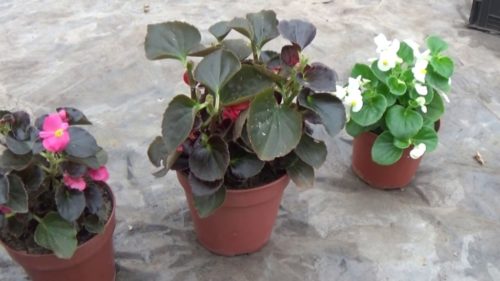
The reproduction of the Begonias is eternal
For the reproduction of Begonias, two ways are used by two ways: cuttings and seeds.
Begonia Eternal Flowing from Seeds
Seed reproduction is a difficult way to reproduce a flower for novice flower products, requires certain skills and time. However, it is the seed or a seaside way, for some regions, where the warm weather is set later, and the summer passes too quickly, is the main for growing begonias. The optimal time for planting a flower seeds is February, the seedlings will require a backlight, since sunlight in winter the plant is not enough. Already by the beginning of the summer, by the time of planting a cook in the ground, Begonia will reach the necessary sizes, will have a developed root. With earlier sowing seeds, the plants will pull out the stalk and give abundant flowering. How to sow seeds?
- Seeds of Begonia Extractless Small, therefore, on seedlings, it is recommended to mix them with pure river sand.
- Prepare containers for seedlings with light, nutrient soil. The finished primer for begonia or flowering plants can be bought in a flower store, it already contains all the necessary substances for the successful growth of the plant.
- Seeds when landing should not be deeply deepened into the soil, they are sulking superficially, into moisturized and loose soil. Slightly sprinkled with soil and covered with glass
- Containers with seeds planted are installed in a warm, well-lit place.
- Periodically, it is necessary to remove the shelter for venting and watering seeds from the spray gun.
- After 10-12 days, the first young seedlings appear. The seedlings of the Begonias of the eternal-drying must be regularly moisturized.
The shower of the begonia eternal
The reproduction of cuttings is a simple and affordable method of breeding a flower. As a cutlets, you can use a stem or a begonia list. The cuttings should be taken from the Begonia's overwhelmed bush, where side shoots have already been formed.
- For lateral shoots, the bush must be briefly trimmed, filing with mineral fertilizers and regularly water, observing moderate humidity in the room. After some time, Kustik will give a large number of young shoots ready for shining.
- The bunches of the begonia of the ever-flowing are cut and placed in water tank, which is added to the prophylaxis of rotation, a tablet of activated carbon is added. You can also stalk immediately plant into the ground for rooting. The peat with sand is suitable as soil. The cutting should be no more than 10 cm long and have 2-3 interstices, extra leaves, at the base, cut off.
- Before planting a cutting, you should be dried for 3 hours.
- The cuttings landed in the ground must be put into a warm and bright place and cover with a can or a transparent plastic bottle, after a month they will root.
- For a month, they should be water, under the root and periodically spray. A special condition for cuttings is not allowing soil overwriting. Already in a month, rooted cuttings can be resettled in an open, well-heated primer.
Another way to reproduce the ever-flowing begonia is a sheet shift, which is used in August when the plant gives a juicy, healthy foliage. To reproduce this method, it is necessary to cut a healthy sheet in a plant, together with a cutlets and to root it into a prepared container with nutritional soil. The leaf should be covered with a polyethylene package so that the rooting has passed faster. Care behind the sheets is the same as behind the stem. A month later, the root leaf is ready for a transplant to a permanent place on the site. Over time, he boots, and in his place new young leaves appear.
It should be remembered that Begonia does not apply to durable plants and loses its attractiveness several years after landing. Therefore, the flower is important to be able to multiply the flower to keep the magnificent and beautiful flowering flowering flower.
Secrets of growing Begonias Emerging
- Extend magnificent blossoms of plants help regular feeding for blooming. In flower shops you can buy special fertilizer in the form of sticks that are inserted into the soil. Such fertilizer feeds the ground with each watering, and also protects the plant from pests.
- The appearance of long, elongated shoots and the pallor of the leaves of the plant is a sign of lack of light. Provide sufficient lighting.
- With insufficiently lush and abundant bloom, air humidity should be paid. Fitting of buds and drying flower kidneys is connected in drought and they are simply overheated, not soying to form ovary. To provide a flower favorable conditions for growth, take the bonding bouncing to the garden in the garden, where the flower will have a light half. When transplanting, use the transshipment method with an earthen room, trying not to affect the root system.
- The yellowing of the plant leaves testifies to the overaffect of soil moisture. It is required to reduce watering.
Begonia Extracting: Diseases and Pest
Begonia's disease is directly related to the wrong leaving of the plant. In addition, unfavorable weather conditions affect the development and flowering of the plant. Incorrect irrigation, excessive soil moisture, low air temperature can provoke the appearance of root or stem rot. For the treatment of plants, the affected areas must be removed and processed the bush of fungicides. If the plant is struck by rotting completely - it is destroyed to prevent the contamination of neighboring bushes.
Because of the oveurgement of the soil and the wrong selected soil, Begonia may suffer fungal diseases: flies dew, bacterial and annular spot. To get rid of the fungus, it is necessary to process the bushes of the Fundazole, topaz, a solution of copper sulphate.
Among the pests of the ever-flowing Begonias, the whitebird, shield, trips, aphid are most often found. Insecticides are used to combat pests in preventive purposes, which are bred according to the instructions. If the insect attack has already happened - they are removed by mechanically, with the help of a sponge, moistened in the soap solution. 
Begonia Emerctive in the Garden
Unpretentious in the care of beautiful Begonia - a find for novice flower flowers. A colorful carpet from the beautiful bouncing bushes of different varieties planted in a row - beautifully draws a flowerbed. Begonia is used for landscaping and decorating balconies, summer arbor, veranda and terraces. Landscape designers often use begonia for gardening of park walkways, borders, flower beds, flower beds, creating bizarre colored compositions that look just luxuriously. Begonia looks great both in monoposade and in a group with other blooming garden plants: velvets, Ageratum, Koleus.
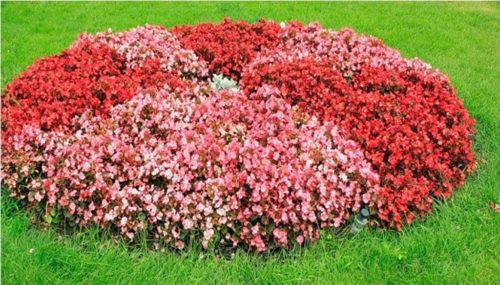
To ensure the landing light shadow, the bushes of begonias are advisable to plant next to low shrubs that will protect the plant from the hot rays at noon. Buckets with elegant begonia can be planted in a pot, porridge, Vazon, which will decorate the resting place in the garden. And with the onset of autumn, the container with a flower can be put into the room, continuing to admire luxurious flowers.
Begonia is eternal without capripping and unpretentious, and its luxurious long blossoms of bright colors in the garden leaves no one indifferent. Flowers, borders, paths, flower beds, decorated with tender begonia, cause a lot of consignable emotions throughout the dacha season until autumn. And in order to extend the summer and decorate the windowsill with bright colors, it is enough to transplant a tropical beauty in a pot and put into the house where she will continue to bloom and delight the eyes.

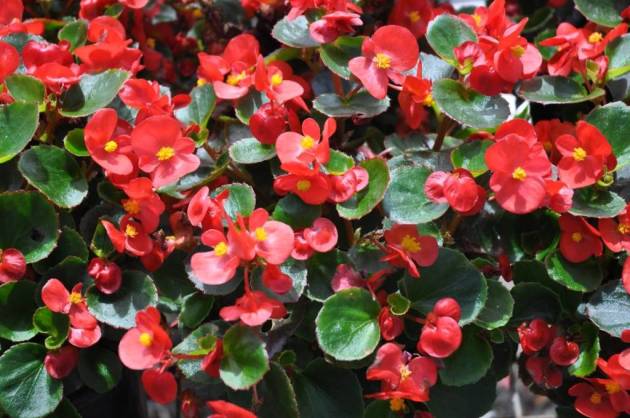

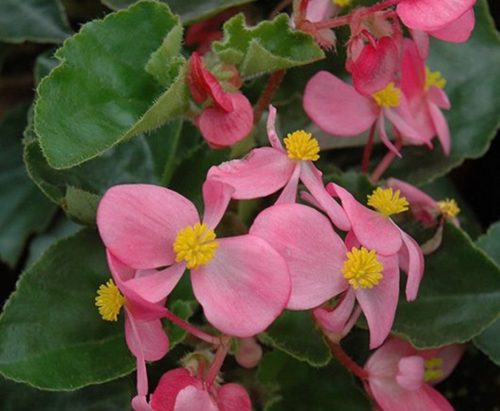
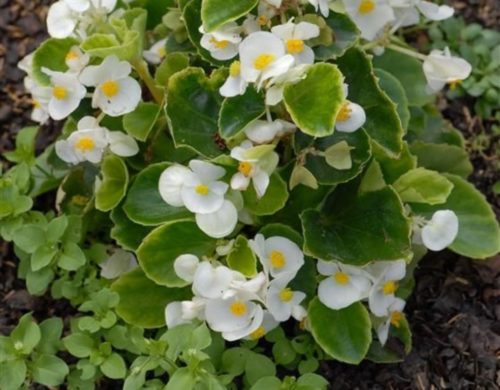
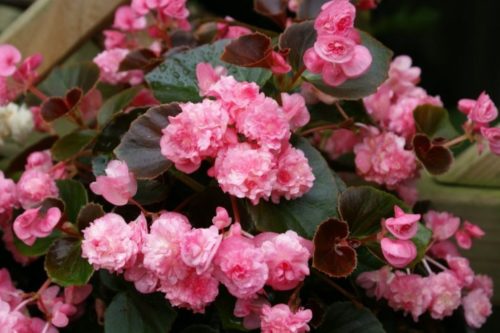

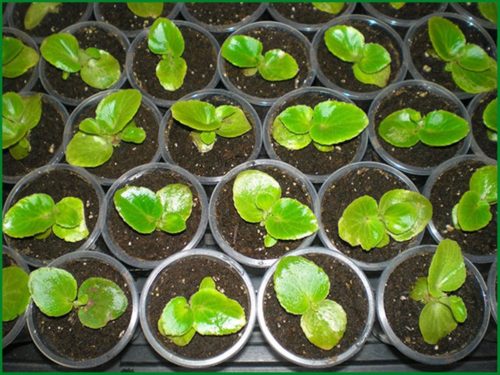

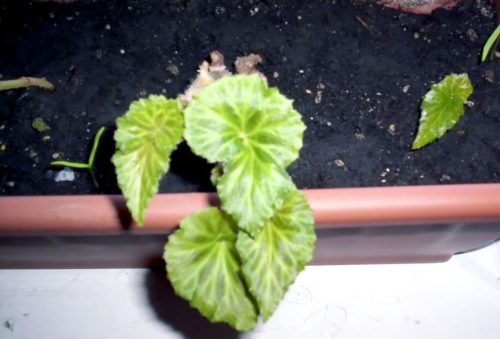
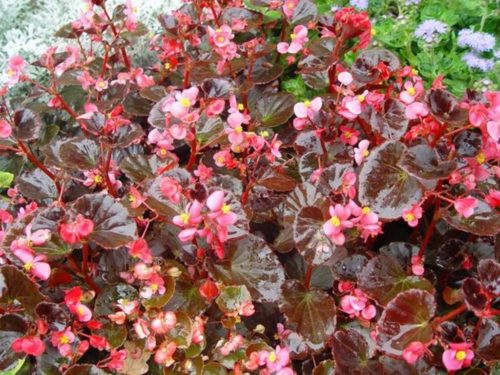
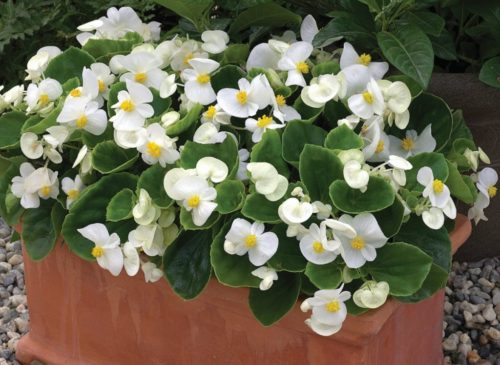
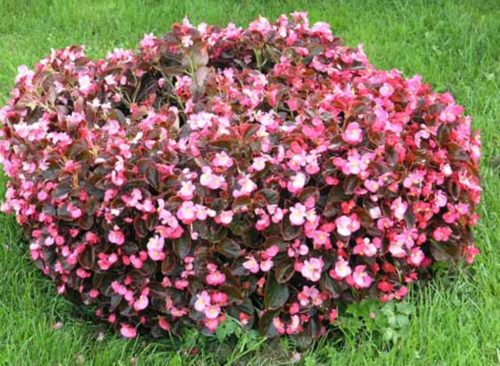


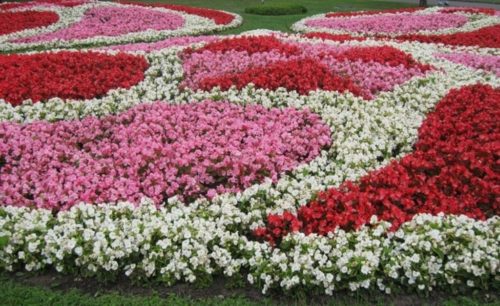
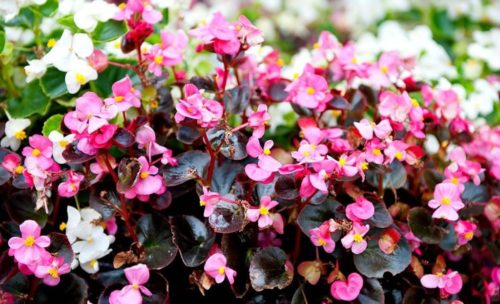
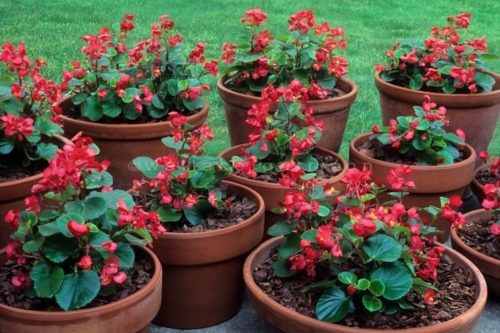
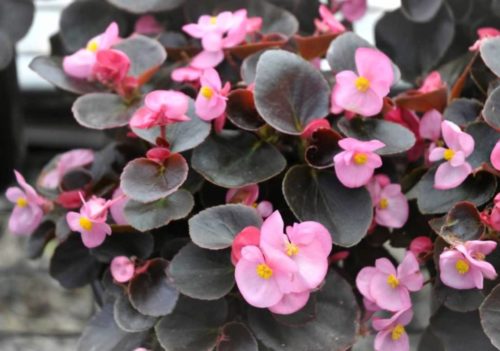












 Start a discussion ...
Start a discussion ...